Mehendi: Uses, Benefits, Side Effects & More!
By Dr Rajeev Singh +2 more

Get,

to manage your symptom
Get your,


4 Cr+ families
benefitted

OTP sent to 9988776655



You’ve successfully subscribed to receive
doctor-approved tips on
Whatsapp

Get ready to feel your best.

Hi There,
Download the PharmEasy App now!!


Register to Avail the Offer
Send OTPBy continuing, you agree with our Privacy Policy and Terms and Conditions

Hi There,
Sign up on PharmEasy now!!
Trusted by 4 crore+ families

OTP sent to 9988776655



You have unlocked 25% off on medicines




Code: NU25
By Dr Rajeev Singh +2 more
Table of Contents
Lawsonia inermis L. also known as mehendi or henna is a shrub or small tree with dense branches, it is cultivated for its various parts (stem bark, roots, flowers and seeds) that are used in traditional medicine. It grows in tropical and subtropical areas. The benefits of mehendi are mentioned in abundance in the history of India Ayurvedic, Siddha, Unani and Chinese medicine. Mehendi has been an essential part of our traditions and it symbolizes fertility. Its popularity in India is due to the cooling effect of the herb which is useful for people in summers1,2.

Did you know?
The nutritional content fount in seeds of mehendi are seeds are1:
Allow me to share something that might pique your interest. The flowers of mehendi may have an interesting ability to relieve sun-induced headaches when applied in a paste form to the forehead. This traditional practice suggests that henna flowers might have soothing properties that may help alleviate headaches caused by sun exposure.
Dr. Anuja Bodhare, B.A.M.S, M.D (Ayu)
The mehendi plant consists of a range of compounds that play a vital role in several human conditions2. It may have following properties
From what I have encountered, in Arabic and Indian medicine, the leaves and roots of mehendi are potentially effective against certain types of diarrhoea. By making a decoction from these leaves and roots, it is believed to help alleviate the symptoms of and provide relief from diarrhoea.
Dr. Smita Barode, BAMS

Mehendi extracts demonstrated blood sugar lowering and lipid-lowering activities in studies1 and thus can be used to lower cholesterol and triglycerides levels in blood in persons with diabetes. Diabetes is a major health condition and requires appropriate diagnosis and treatment from a professional doctor. Therefore, human trials of mehendi are necessary to provide its potential usage for managing blood sugar levels in humans.

Mehendi leaves extract demonstrated immunity stimulating effect immunomodulatory effect in studies1 as shown by the increase in a certain type of white blood cells, called T-lymphocytes. Further studies are needed to establish the claim of effect of mehendi for immunomodulatory effect.
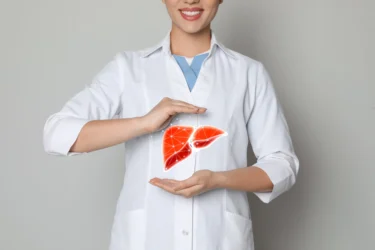
Mehendi bark extract has also demonstrated hepatoprotective (liver protective) and antioxidant activity in studies1,3. Mehendi leaf extracts were able to reduce the weight of the liver and the total bilirubin content in the blood1. However more human studies are needed to estimate the extent to which it will be beneficial for human health.
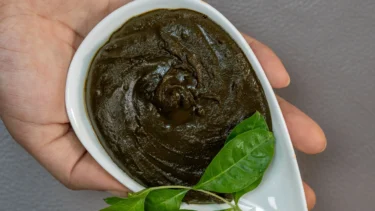
In some countries, sickle cell anaemia is a common disease. In this condition, there is the formation of sickle-shaped red blood cells. These cells block the blood vessels and this results in obstruction in the transportation of oxygen. In several studies, mehendi has been found to prohibit the formation of sickle cells4. However, serious conditions like sickle cell anaemia must be diagnosed and treated by a doctor. Therefore, kindly consult a doctor and do not self-medicate.
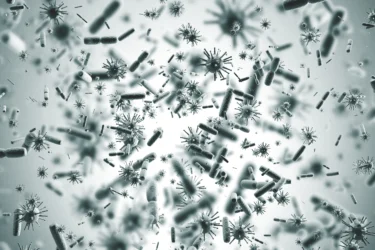
Some components of mehendi have been found to possess antimicrobial activity3. Extracts of mehendi can possibly treat infectious diseases1. Researches1 show that mehendi extract has antibacterial activity against both gram positive and gram negative types of bacteria. Studies done on 13 ring worm fungi show a broad spectrum of activity in killing the fungi presented by mehendi plant extract1.
Mehendi fruits too may be effective against Sembiki forest virus (SFV)1. Studies also determined leishmanicidal, antimalarial, antihelminthiasis, antiscabies and trypanocidal activities by mehendi plant extracts, all of which are activity against varies harmful parasites1.
Some studies5 have also established that extracts of mehendi are capable of replacing disinfectants used commercially. Mehendi extract was found to be inhibiting the growth of Mycobacterium tuberculosis in some studies1. Mehendi plant was traditionally used in the indigenous system of medicine. Compounds isolated from the plant also show anti-inflammatory, analgesic, and antipyretic activity that can all help in fighting infections3. Leaves may show anti-inflammatory activity3. Further studies are needed to establish the claim of effect of mehendi for infections.

Extract of mehendi leaves was tested on the liver and human breast cells and they demonstrated cytotoxic (cell-killing) effects1,3. Compounds extracted from mehendi show anti-cancer activity against melanoma and colon cancer1. There is a need of more extensive research to validate the effect of mehendi in humans. Cancer needs to be diagnosed and treated by a qualified doctor, hence, kindly consult a doctor.
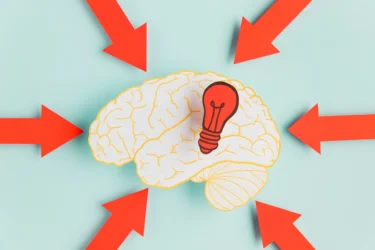
Mehendi leaf extract may enhance memory or other cognitive functions and behaviour mediated through monoamine neurotransmitters1,3. The studies seem insufficient to validate these claims, therefore consult an ayurvedic physician before taking mehendi for its effect on brain.

Anticoagulant activity of mehendi leaves was studied and established on the plant derivatives isolated from its leaves1. These activities of mehendi, however, are yet to be proved in humans.
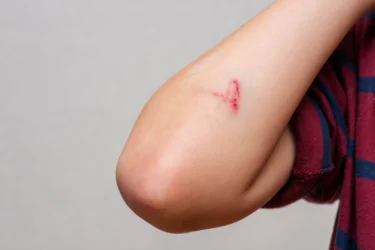
Findings done histologically on the plant suggest the use of mehendi extract in wound healing as it shows several properties such as collagen production properties, enhanced wound contraction and increased skin breaking strength. These findings also suggest that we may use mehendi extracts in the burn wound infections management3. However, more human studies are needed to estimate the extent to which it will be beneficial for human health.

Mehendi seed extract was found to have antioxidant activity in research2. Due to the presence of polyphenols the plant extracts possess the ability to remove free radicals by engulfing them and producing antioxidants1. Studies6 show that fresh leaves of mehendi plant may be used to develop healthy foods due to their high antioxidant activity and consequent health benefits.
Though there are studies showing the benefits of mehendi in various conditions, these are insufficient. There is a need for further studies to establish the true extent of the benefits of mehendi on human health. Furthermore, every person may respond differently to these herbs. Therefore, it is important to consult a doctor before using mehendi for any medical condition.
In my view, mehendi leaves might offer an interesting benefit when it comes to managing obesity. In Indonesia, it is believed that consuming tea made from these leaves may help in managing weight and keeping obesity at bay. While more research is necessary to fully understand the underlying mechanisms, the fact that mehendi leaves might be associated with weight management sparks curiosity.
Dr. Rajeev Singh, BAMS
Mehendi leaf is ground into a paste, or the dried leaves are powdered and used as hair dye for decorating hands, nails and feet. It gives relief in jaundice, skin diseases and smallpox1.
Mehendi has fragrant flowers and a concoction of the flowers may aid bruises to heal faster when applied locally1.
Mehendi seeds when powdered and mixed with ghee may be effective in treating dysentery1.
The decoction of mehendi bark can be applied to burns and scalds. It is also effective in cases such as enlargement of the spleen, jaundice, calculus, and as a supplementary treatment in leprosy and obstinate skin problems1.
Mehendi may be a remedy for problems like gonorrhoea and herpes infection. Roots may be pulped and used for sore eyes and applied on the head of children for boils. In some parts of Cambodia, people drink a decoction for a diuretic action. Combined with indigo, mehendi root may become a powerful abortifacient1.
You must consult a qualified doctor before taking any herbal supplements. Do not discontinue or replace an ongoing treatment of modern medicine with an ayurvedic/herbal preparation without consulting a qualified doctor.
According to what I’ve noticed, traditionally the leaf and flower infusions of mehendi may be used externally to fend off ulcers and rheumatism. Additionally, these infusions might be consumed orally to alleviate symptoms of tetanus, epilepsy, and stomach pains.
Dr. Siddharth Gupta, B.A.M.S, M.D (Ayu)
Also Read: Camphor: Uses, Benefits, Precautions, Side Effects & More!
Mehendi extracts are studied and found to be safe to be used ordinarily1. It may be safe in pure form while henna tattoos have been reported to induce chronic psoriasis, intensely itchy erythematous, blistering eruptions to painful, itchy exudative bullous eruptions, swelling, or renal collapse and failure8.
If you experience any side effect on consuming mehendi, you must consult the doctor who prescribed it to you immediately.
Also Read: Neem: Uses, Benefits, Side Effects, and More!
Also Read: Lavender – Uses, Benefits, Side Effects & Precautions
Yes, All the mehendi plant’s parts are used to treat a variety of ailments. Mehendi is rich in phytochemicals and eating mehendi helps in protection against several diseases2.
Studies on the plant suggest that it is effective in wound healing as it has properties such as collagen production properties, enhanced wound contraction and increased skin breaking strength3. Mehendi bark decoction may also be directly applied on burns it is suggested to take proper treatment for wounds to avoid risk of worsening it.
Mehendi may give relief in jaundice1. The bark is used to be consumed in jaundice3. This claim would need further studies to be proven, consult a doctor for proper advice.
Henna can help our hair as it shows antidandruff activity; it also contains a dye molecule called Lawsone, which when processed becomes Henna powder dye. Henna has a natural affinity to the proteins in our hair, making it potentially able to ”stain” the colour onto the hair shaft9. However the evidences are insufficient to support any helpful effect of mehendi on human hair.
Mehendi has been used in some parts of Cambodia. People drink a decoction of mehendi roots as a diuretic1. However no large scale studies have been able to provide evidence for this effect.
Disclaimer: The information provided here is for educational/awareness purposes only and is not intended to be a substitute for medical treatment by a healthcare professional and should not be relied upon to diagnose or treat any medical condition. The reader should consult a registered medical practitioner to determine the appropriateness of the information and before consuming any medication. PharmEasy does not provide any guarantee or warranty (express or implied) regarding the accuracy, adequacy, completeness, legality, reliability or usefulness of the information; and disclaims any liability arising thereof.
Links and product recommendations in the information provided here are advertisements of third-party products available on the website. PharmEasy does not make any representation on the accuracy or suitability of such products/services. Advertisements do not influence the editorial decisions or content. The information in this blog is subject to change without notice. The authors and administrators reserve the right to modify, add, or remove content without notification. It is your responsibility to review this disclaimer regularly for any changes.
Comments

Leave your comment...
You may also like
Comments